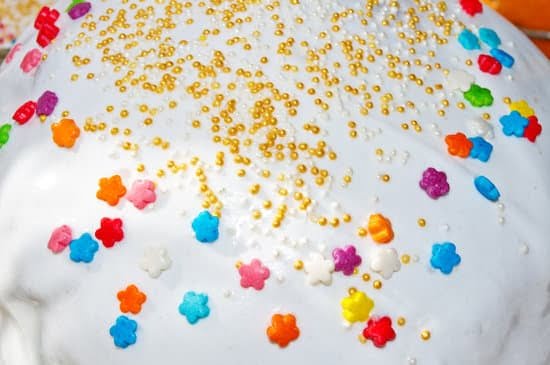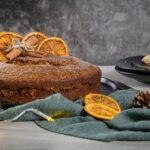Why Russian cake decoration is gaining popularity worldwide and the importance of understanding Russian cake decorating techniques. Preview of the top tips to achieve stunning Russian-inspired cake designs.
Russian cake decoration is a captivating art form that has been gaining global recognition and admiration in recent years. From its rich history to its intricate designs, Russian cake decorating offers a unique and fascinating glimpse into a world of beauty and elegance. Understanding the techniques behind this style of cake decoration can elevate your baking skills and allow you to create breathtaking designs that are sure to impress.
The allure of Russian cake decoration lies in its attention to detail, vibrant colors, and ornate patterns. Traditional Russian cake designs often incorporate elements inspired by nature, folklore, and cultural symbols. By incorporating these key elements into your own creations, you can take your cakes from ordinary to extraordinary.
In this article, we will be exploring the world of Russian cake decoration, delving into its history and influences. We will uncover the secrets behind achieving flawless piped decorations using authentic Russian techniques. You will also learn about must-have tools, where to find authentic supplies online, and tips for creating stunning floral decorations inspired by traditional Russian motifs.
Get ready to embark on a journey through the enchanting world of Russian cake decoration. With these best tips in hand, you’ll soon be able to infuse your creations with the elegance and uniqueness that comes from this timeless art form. Whether you’re an experienced baker or just starting out on your decorative journey, this article will provide you with all the inspiration and guidance needed to bring these stunning designs to life.
Understanding the Traditional Russian Cake Decorating Style
Uncovering the history and influences behind Russian cake decoration:
- Russian cake decoration has a rich history that dates back to the 18th century. It draws influences from various artistic movements, such as the Byzantine era and traditional Russian folk art. Understanding this history is essential to truly appreciate and replicate authentic Russian cake designs.
- Traditional Russian cake designs are known for their intricate details, vibrant colors, and unique motifs. These designs often incorporate floral patterns, lacework, filigree, and ornate borders. By studying the influences and key elements of this style, decorators can better capture the essence of Russian cake decoration.
Key elements and characteristics of traditional Russian cake designs:
- Vibrant colors: Traditional Russian cakes are adorned with bold and striking colors. Red, gold, blue, and green are commonly used to create eye-catching designs that reflect the opulence of Russia’s cultural heritage.
- Intricate patterns: One hallmark of traditional Russian cake decoration is the use of intricate patterns. Lacework, filigree details, and floral motifs are meticulously incorporated into these designs to create a visually stunning effect.
- Unique motifs: Traditional Russian cake designs often feature motifs inspired by nature and folklore. Elements like birds, flowers (particularly roses), wheat sheaves, and Matryoshka dolls are frequently seen in these decorations.
Examining the significance of vibrant colors, intricate patterns, and unique motifs:
- The vibrant colors used in traditional Russian cake decoration symbolize joy, abundance, prosperity, and good luck. They convey a sense of celebration and add a festive atmosphere to any occasion.
- The intricate patterns found in these designs showcase the skillful craftsmanship associated with this art form. Creating these delicate details requires precision, patience, and attention to detail.
- The unique motifs incorporated into Russian cake decorations reflect specific cultural references or storytelling traditions. They add depth and meaning to the design while celebrating Russia’s rich heritage.
By understanding the history, key elements, and significance of vibrant colors, intricate patterns, and unique motifs in traditional Russian cake decoration, decorators can effectively capture the essence and beauty of this art form. Incorporating these elements into their own designs will help create stunning cakes that pay tribute to the cultural heritage and popularity of Russian cake decorating worldwide.
Mastering the Art of Russian Piping Techniques
A step-by-step guide to achieving flawless Russian piped decorations
Russian piping techniques are known for their intricate and delicate designs that add a touch of elegance to any cake. Whether you’re a professional baker or a home baker looking to try something new, mastering the art of Russian piping techniques can take your cake decorating skills to the next level. Here is a step-by-step guide to help you achieve flawless Russian piped decorations:
- Prepare the piping bag and nozzle: Start by fitting a flower-shaped piping nozzle into a piping bag. It’s important to use a large, sturdy bag that won’t burst under pressure. You can use a disposable plastic bag or invest in reusable silicone ones for better control.
- Fill the bag with buttercream: Fill the piping bag with your desired colored buttercream or royal icing. The consistency of the buttercream should be firm enough to hold its shape but soft enough to flow smoothly through the nozzle.
- Practice control and pressure: To achieve beautiful flowers and delicate details, it’s crucial to have control over the amount of pressure applied while piping. Start by practicing on parchment paper or a practice board until you feel comfortable with how much pressure produces different effects.
- Pipe the base: Begin by squeezing out a small amount of icing onto your cake surface to create the base for your design. This will act as an anchor for your flowers and other decorative elements.
- Create flowers and designs: To pipe flowers, position the nozzle just above the base and apply gentle, even pressure as you rotate your wrist in a clockwise motion. This will create petals that form a blooming flower shape. You can layer multiple flowers together for added dimension.
- Add leaves and stems: Use a leaf-shaped nozzle or simply cut an opening at an angle on your existing flower-shaped nozzle for creating leaves and stems. Apply gentle pressure while making small strokes to pipe leaves and stems in desired areas.
- Practice different designs: The beauty of Russian piping techniques lies in the variety of designs you can create. Experiment with different nozzle shapes, angles, and pressures to achieve various effects like ruffles, shells, and scrollwork.
Exploring the different types of piping nozzles used in Russian cake designing
Russian cake decorating is known for its extensive use of piping nozzles to create intricate and detailed designs. Here are some commonly used types of piping nozzles in Russian cake designing:
- Flower-shaped nozzles: These nozzles come in various sizes and produce beautiful floral designs including roses, tulips, daisies, and more. They are perfect for creating multi-layered flowers with realistic petal details.
- Leaf-shaped nozzles: These specialized nozzles have a sharp triangular-shaped opening that allows you to easily pipe realistic leaves and elongated stems. They are great for adding foliage to your floral arrangements or creating dimensional border designs.
- Ball-shaped nozzles: As the name suggests, these unique nozzles have a ball-shaped opening that produces tiny spherical dots when piped onto a surface. They are often used to add texture or as accents around larger floral arrangements.
- Filigree-tipped nozzles: These intricate nozzles have delicate patterns etched into their interior, allowing the user to pipe intricate filigree designs with ease. They are commonly used to create lace-like patterns on cakes or as decorative elements on borders.
- Rosette and star-shaped nozzles: These versatile nozzles have ridged edges that create ruffles or zigzag patterns when piped onto a surface. They can be used for both borders and intricate designs such as rosettes or stars.
Tips for creating beautiful floral, lace, and filigree designs using piping techniques
Creating stunning floral, lace, and filigree designs using Russian piping techniques requires practice and attention to detail. Here are some tips to help you achieve beautiful results:
- Consistency is key: Ensure that your buttercream or royal icing is the right consistency. It should be firm enough to hold its shape but soft enough to flow smoothly through the nozzle. Adjust the consistency by adding more powdered sugar or liquid as needed.
- Practice on a practice board: Before piping directly onto your cake, practice your designs on a practice board or parchment paper. This will allow you to familiarize yourself with different pressure techniques and experiment with various nozzle shapes.
- Layer colors for depth: To create realistic floral designs, layer different shades of icing or buttercream in a single piping bag. Start with a darker shade at the base and gradually transition to lighter shades towards the top of the flower for added depth and dimension.
- Add details with a brush: Use a small food-safe brush to add additional details like highlights or shadows to your piped designs. Dip the brush lightly into edible color dust or diluted food coloring, then gently brush along the edges or centers of your flowers for an enhanced effect.
- Freeze piped decorations before transferring: If you want to transfer delicate piped decorations onto a cake surface without damaging them, freeze them briefly on parchment paper first. This will make them easier to handle and prevent distortion during transfer.
By following these tips and practicing regularly, you can master the art of Russian piping techniques and create stunning cake decorations that will impress both yourself and others.
Best Russian Cake Decorating Tools and Supplies
Russian cake decorating is known for its intricate designs and vibrant colors, and having the right tools and supplies is essential to achieving stunning results. Whether you are a beginner or an experienced baker looking to try Russian cake decorating, here are some must-have tools and where to find authentic Russian cake decorating supplies online.
- Piping Nozzles: One of the key elements of Russian cake decoration is the use of piping techniques to create intricate designs. There are various types of piping nozzles used in Russian cake designing, such as flower nozzles, leaf nozzles, and ball nozzles. These different nozzles allow you to create beautiful floral motifs, lace patterns, and filigree designs on your cakes.
- Brushes: Fine brushes are essential for adding delicate details to your Russian-inspired cake designs. Look for high-quality brushes with fine bristles that can be used with edible paints or dusts to create intricate patterns or add gold and silver accents.
- Stencils: Stencils are a great tool for achieving consistent patterns and designs on your cakes. Look for stencils that feature traditional Russian motifs like Matryoshka dolls, kokoshnik headdresses, or floral patterns. These stencils can help you easily recreate the intricate designs seen in traditional Russian cake decoration.
Finding authentic Russian cake decorating supplies can sometimes be a challenge, but there are online stores that specialize in providing these unique products. One popular option is “RussianCakes.com,” which offers a wide range of piping nozzles, brushes, stencils, molds, and other tools specifically designed for Russian cake decorating.
| Tool/Supply | Description |
|---|---|
| Piping Nozzles | Various types of nozzles used to create floral motifs, lace patterns, and filigree designs on cakes. |
| Brushes | High-quality brushes with fine bristles for adding delicate details, patterns, or gold/silver accents to cakes. |
| Stencils | A tool for achieving consistent patterns or traditional Russian motifs on cakes. |
Enhancing Cake Designs with Russian Floral Decorations
Russian cake decoration is renowned for its stunning floral designs. By incorporating Russian floral decorations into your cake designs, you can create a truly unique and beautiful masterpiece. In this section, we will provide step-by-step instructions for creating these stunning Russian-inspired sugar flowers, tips for selecting the right colors and textures, and ideas for incorporating traditional Russian floral motifs into cake designs.
To create lifelike edible blossoms, start by selecting the right materials. Gum paste or fondant are commonly used to make sugar flowers. These materials are pliable and allow for intricate detailing. Choose colors that reflect the vibrancy commonly seen in Russian floral designs. Reds, pinks, purples, and golds are popular choices.
Once you have your materials ready, begin shaping your flowers by hand or using silicone molds designed specifically for creating sugar flowers. Start with the center of the flower and work outward, layering petals and adding details as needed. To add depth and texture to your flowers, use petal dusts or food coloring to shade different areas. Remember to let each layer dry before adding the next to maintain the shape of the flower.
Incorporating traditional Russian floral motifs into cake designs can elevate them even further. Look for inspiration in traditional Russian textiles or folk art. Common motifs include peonies, sunflowers, roses, and daisies. Use stencils to create delicate floral patterns on cakes or paint them freehand using edible food colors mixed with vodka or clear alcohol.
By embracing the beauty of Russian floral decorations you can take your cake designs to another level of elegance and sophistication. Remember to experiment with different techniques and have fun exploring this rich tradition in cake decorating.
Breaking Down the Intricate Russian Lace Designs
Russian lace designs are known for their delicate and intricate patterns, adding a touch of elegance to any cake. In this section, we will explore the techniques used to achieve these beautiful lace patterns using edible mediums. We will also provide tips for transferring lace designs onto cakes and maintaining their intricacy, as well as suggestions for incorporating lace elements into modern cake designs.
To create delicate lace patterns on cakes, there are several techniques that can be used. One popular method is piping royal icing onto parchment paper in the desired lace pattern and allowing it to dry completely. Once dry, the lace design can be carefully transferred onto the cake. Another technique involves using edible lace mats or stencils to imprint the design onto fondant or gum paste and then attaching it to the cake.
When transferring lace designs onto cakes, it is important to maintain their intricacy. To do this, it is recommended to handle the lace design with care and precision when placing it onto the cake surface. If any parts of the design break or become distorted during transfer, they can be repaired by applying a small amount of royal icing or edible glue.
Incorporating lace elements into modern cake designs can add a touch of timeless elegance. For example, a modern wedding cake can be enhanced with subtle lace accents on each tier or as a border around the base of each layer. Lace designs can also be used on single-tiered celebration cakes as a focal point or as an intricate wrap-around pattern.
| Techniques for Achieving Lace Patterns | Tips for Maintaining Intricacy | Incorporating Lace Elements in Modern Cake Designs |
|---|---|---|
| 1. Piping royal icing onto parchment paper and transferring it onto the cake. | 1. Handle lace design with care during transfer to avoid breakage or distortion. | 1. Add subtle lace accents to wedding cakes or as a border around each tier. |
| 2. Using edible lace mats or stencils to imprint the design onto fondant or gum paste. | 2. Repair any broken or distorted parts of the design with royal icing or edible glue. | 2. Use lace designs as focal points or intricate wrap-around patterns on single-tiered celebration cakes. |
Unveiling the Elegance of Russian Filigree Cake Decorations
Filigree is a highly intricate and delicate form of decoration that adds elegance and sophistication to Russian cake designs. This section will provide a step-by-step guide on how to create stunning filigree decorations using royal icing. Additionally, it will offer tips for achieving clean and symmetrical patterns and incorporating gold and silver accents to elevate the elegance factor.
To create filigree designs on cakes, it is important to start with a sturdy canvas. Make sure your cake is properly chilled before applying any decorations to ensure stability. Royal icing is commonly used for filigree as it dries hard, allowing for intricate details. Here is a step-by-step guide on creating filigree decorations:
- Prepare your royal icing: Royal icing should be thick enough to hold its shape but thin enough to pipe easily. Adjust the consistency by adding small amounts of water or powdered sugar until you achieve the desired thickness.
- Transfer the design: Using a pencil or food-safe pen, lightly sketch your chosen filigree pattern onto the cake surface. This will serve as a guideline for piping.
- Piping technique: Fill a piping bag fitted with a small round nozzle (size 1 or 2) with the prepared royal icing. Apply gentle pressure and pipe along the sketched lines, creating interconnected loops, swirls, and curves that make up the filigree design. Practice steady hand movements for clean lines.
- Drying time: Allow the royal icing filigree to dry completely before moving onto other decorations or handling the cake further. This usually takes several hours or overnight.
To enhance the elegance of Russian filigree cake decorations, consider incorporating gold and silver accents. Use edible metallic paints or dusts specifically designed for cake decorating to add shimmering highlights to certain areas of the filigree pattern. Lightly brush these accents onto raised areas or specific details like edges or twists in the design using a clean and soft food-grade paintbrush.
Keep in mind that filigree work requires patience and precision. Take your time and practice the piping technique on parchment paper or a practice surface before attempting it on a cake. With practice, you will be able to master the art of creating stunning and intricate filigree designs that will impress your guests and elevate the overall elegance of your Russian-inspired cake.
Showcasing Authentic Russian-Inspired Cake Designs for Inspiration
To truly appreciate the artistry and beauty of Russian cake decorating, it is essential to explore authentic Russian-inspired cake designs. These masterpieces showcase the unique techniques and elements that make Russian cake decoration so special.
In this section, we will showcase some impressive Russian cake designs crafted by skilled bakers, breaking down the key elements and techniques used in each design. Whether you are looking for inspiration or simply want to admire the creativity of these artists, these cakes are sure to leave you in awe.
Traditional Matryoshka Cake
The first cake design we will explore is a traditional Matryoshka doll-inspired creation. This design pays homage to one of Russia’s most recognizable symbols – the nested dolls that represent fertility, family, and unity. The cake features beautifully hand-painted layers that mimic the intricate patterns found on Matryoshka dolls. The vibrant colors and detailed brushwork truly bring this cake to life.
Fabergé Egg Cake
Next up is a stunning Fabergé egg cake, inspired by the renowned jeweler Carl Fabergé. These elaborately decorated eggs were created for the Russian imperial family and have become synonymous with luxury and opulence. This cake design replicates the intricate details and metallic accents found on a Fabergé egg using gold leaf and edible pearls. The delicate sugar flowers adorning the top add an extra touch of elegance.
Cathedral Inspired Cake
A cathedral-inspired cake design captures the grandeur and architectural beauty of Russia’s iconic cathedrals. This multi-tiered masterpiece showcases towering spires, arched windows, and ornate details meticulously crafted from fondant or royal icing. The sheer intricacy of this design demonstrates the immense skill required to create such breathtaking works of art.
These examples only scratch the surface of what can be achieved with Russian-inspired cake designs. Each cake reveals the dedication, talent, and precision that go into creating these edible works of art. By studying and appreciating these designs, bakers can gain insight into the techniques and elements that make Russian cake decoration so captivating.
Whether you choose to recreate these designs or incorporate certain elements into your own creations, exploring authentic Russian-inspired cake designs is a wonderful way to be inspired and celebrate the rich cultural heritage of Russia in the realm of cake decorating.
Conclusion
In conclusion, Russian cake decorating offers a fascinating and unique approach to creating stunning cake designs. The popularity of this style is on the rise worldwide, as bakers and decorators recognize the beauty and cultural significance behind it. Throughout this article, we have explored the history, techniques, tools, and design elements that make Russian cake decoration so exceptional.
Understanding the traditional Russian cake decorating style is essential for achieving authentic designs. The vibrant colors, intricate patterns, and unique motifs are key characteristics that set Russian cakes apart. By mastering the art of Russian piping techniques and utilizing the right tools and supplies, bakers can create flawless floral, lace, and filigree designs that truly capture the elegance of this style.
Russian cake decoration also offers endless opportunities for creativity. From creating stunning sugar flowers to incorporating delicate lace patterns or intricate filigree designs with royal icing, there are countless ways to add a touch of Russian-inspired beauty to your cakes. Looking at impressive examples of Russian cake designs crafted by skilled bakers can serve as inspiration and spark ideas for your own projects.
In embracing the elegance and uniqueness of Russian cake decorating, we encourage you to experiment with new designs and techniques. The tips provided throughout this article serve as a foundation for your creative journey in exploring the immense beauty behind this art form.
Whether you are an experienced baker or just beginning your pastry adventure, venturing into the world of Russian cake decoration will undoubtedly elevate your skills and bring a touch of cultural significance to your creations. So go forth with confidence – let your imagination run free with these newfound skills and immerse yourself in the elegance of Russian cake decorating.
Frequently Asked Questions
What frosting works best with Russian piping tips?
When it comes to using Russian piping tips, the frosting that works best is a buttercream frosting with a medium consistency. This type of frosting allows for clean and defined shapes to be created through the piping tips.
The buttercream should not be too soft or runny, as it might not hold its shape well and may easily lose its definition once piped onto the cake. Similarly, a very stiff buttercream could make it difficult to pipe smoothly and could result in uneven patterns.
How to decorate a cake with Russian tips?
Decorating a cake with Russian tips can create beautiful and intricate designs. To start, ensure that your cake is frosted with a thin layer of buttercream to provide a base for the decorations. Fill a piping bag fitted with the desired Russian piping tip with your chosen frosting.
Apply gentle pressure to the bag while keeping it at a 90-degree angle above the cake surface. Start by applying slight pressure and then gradually increase it as you pipe out the design, moving in an even motion from bottom to top or in circular motions, depending on the specific tip you are using. Experiment with different colors and combinations of Russian tips to create stunning designs.
How many different Russian piping tips are there?
There are numerous different types of Russian piping tips available, each offering its unique decorative pattern. While there isn’t an exact count of how many different types exist, there are commonly found sets that include around 7 to 10 different tips in various shapes such as flowers (like roses and tulips), leaves, stars, ruffles, spheres, or even more intricate designs like lace patterns or snowflakes.
Additionally, new designs continue to be introduced by manufacturers and independent sellers regularly. The variety allows decorators to have a wide range of options when it comes to creating visually appealing designs on cakes or other baked goods using Russian piping tips.

Welcome to our cake decorating blog! My name is Destiny Flores, and I am the proud owner of a cake decorating business named Cake Karma. Our mission is to provide delicious, beautiful cakes for all occasions. We specialize in creating custom cakes that are tailored specifically to each customer’s individual needs and tastes.





